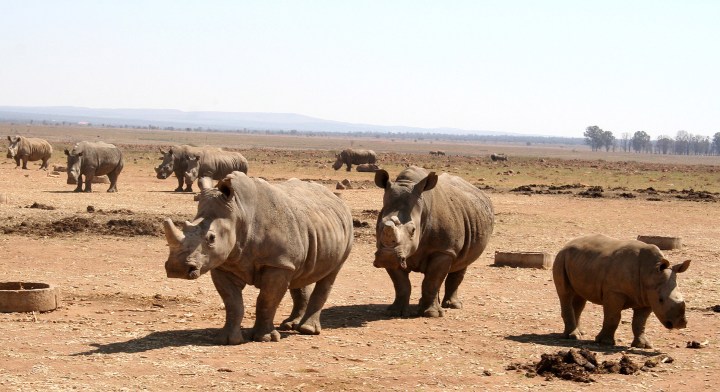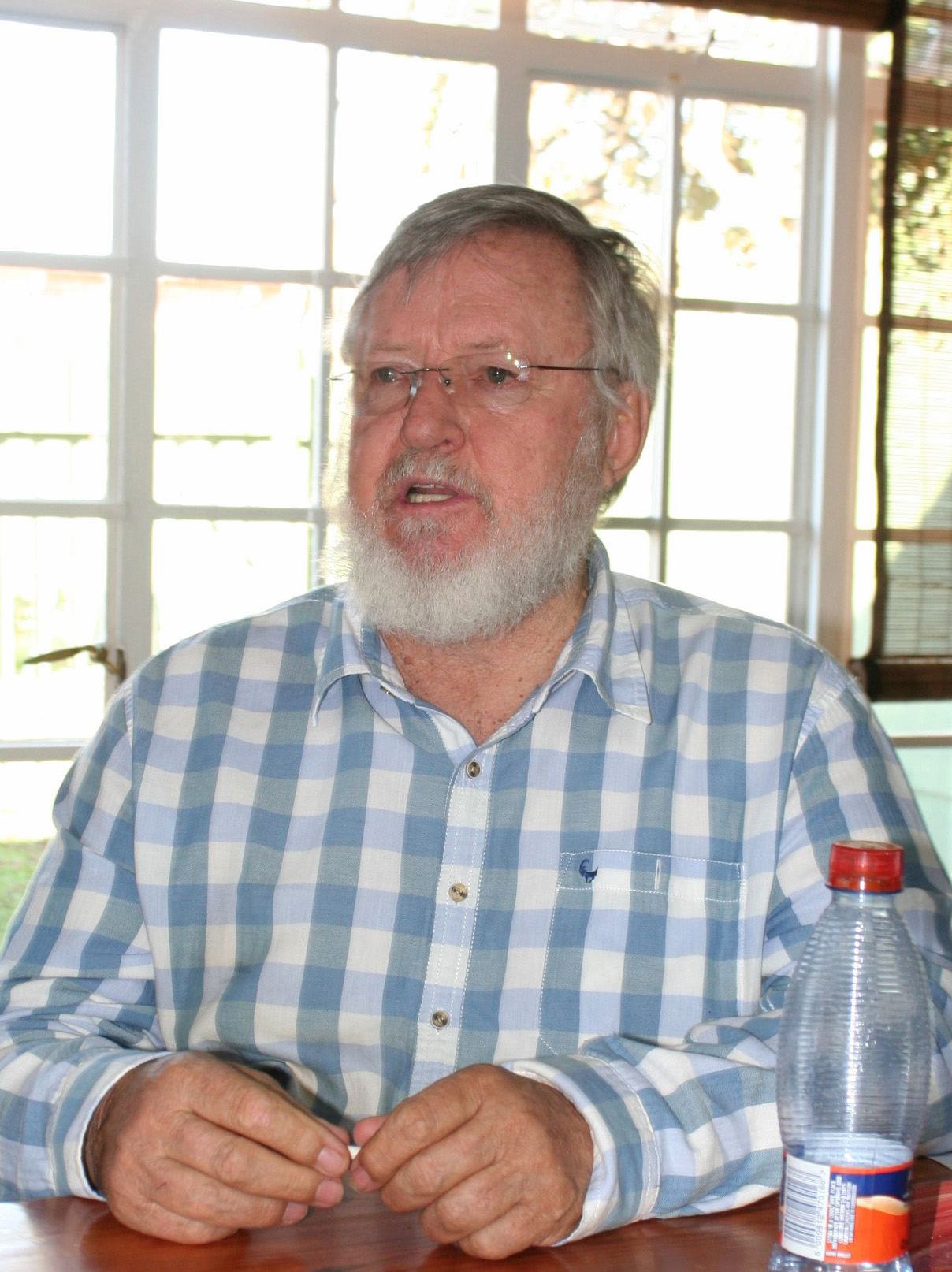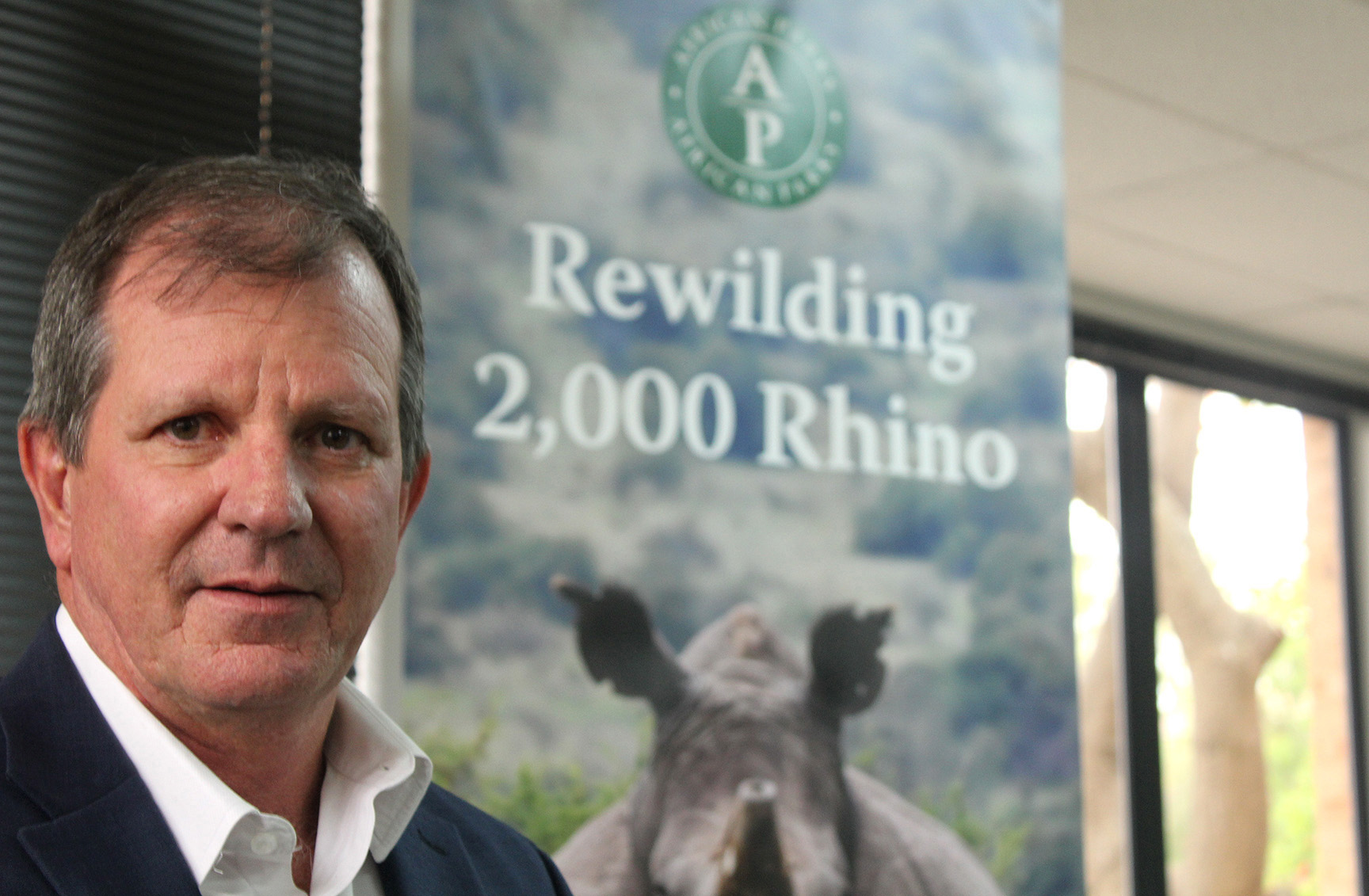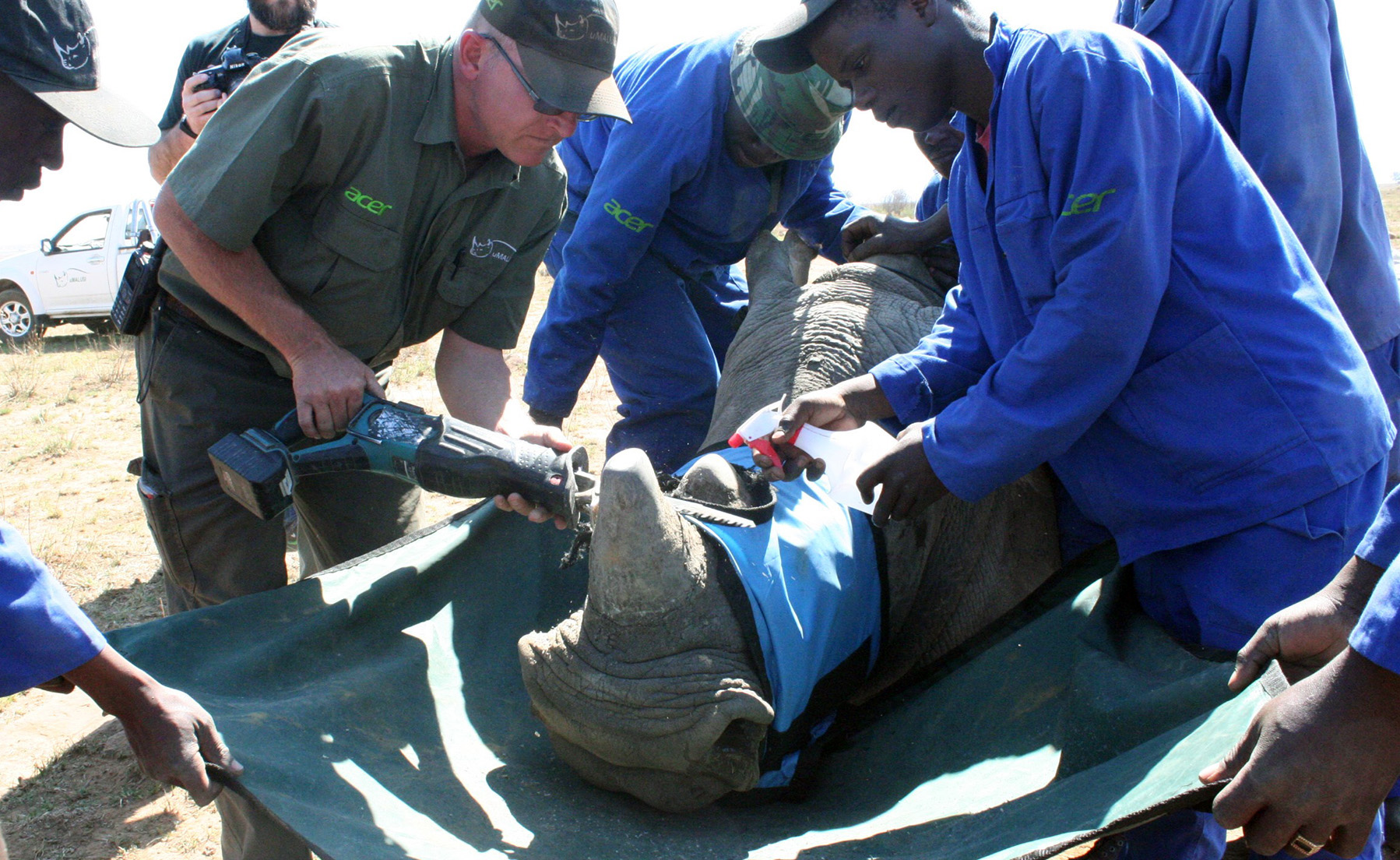RELOCATION OPERATION
Four African nations line up to ‘rewild’ massive herd of ‘homeless’ South African rhinos

In what will likely be the world’s largest mass translocation of rhinos, conservation groups are planning to move 300 rhinos a year for the next 10 years to locations across South Africa and elsewhere on the rest of the continent.
Conservation groups in at least four African nations (Namibia, Zimbabwe, Zambia and Kenya) have offered to “rewild” the first contingent of up to 3,000 South African rhinos — an operation shaping up to be the world’s largest mass translocation of this increasingly threatened species.
Just short of 2,000 rhinos — previously owned by private rhino rancher John Hume — were purchased recently by the Johannesburg-based African Parks non-profit conservation group with funding from anonymous philanthropists. This came after Hume ran out of money to feed and protect his private herd, but drew no bidders at an auction earlier this year.
As this number of rhinos cannot be moved immediately en masse, Hume’s former herd of semi-wild rhinos is expected to keep growing to reach as many as 3,000 over the next decade while African Parks attempts to find new habitats that are secure and ecologically suitable within South Africa and other parts of the continent.
Read more in Daily Maverick: Hume’s herd of 2,000 African rhinos get a last-minute ‘lifeline’ in major purchase and rewilding project

John Hume, who built up a private herd of 2,000 rhinos, but was forced to sell them this month when he ran out of money to sustain them. (Photo: Tony Carnie)
African Parks’ chief executive, Peter Fearnhead, has likened the coming moves to a second “Operation Rhino”, reminiscent of the pioneering 1960s initiative by the former Natal Parks Board to translocate some of the last surviving populations of southern white rhinos to other wildlife sanctuaries in South Africa and further afield.
While accurate records are not available, veteran KwaZulu-Natal conservationist Dave Cook has estimated that somewhere around 1,200 rhinos were donated or sold over about three decades as part of Operation Rhino, mainly to restock the Kruger National Park and other wildlife reserves where the species had been driven to extinction.
Since then, many of these populations have been bludgeoned by international horn poaching syndicates.
Read more in Daily Maverick: Saving private rhino — non-government owners of the animals succeed in stemming poaching carnage

African Parks chief executive Peter Fearnhead speaks at a media briefing in Johannesburg on 12 September 2023.(Photo: Tony Carnie)
“We would like to establish multiple large white rhino populations across Africa,” said Fearnhead, as a means of ensuring that this valuable pool of rhino “eggs” were not kept in a single basket.
At a media briefing in Johannesburg on September 12, Fearnhead emphasised that his organisation was determined to ensure the safety and survival of the animals and would appoint an advisory committee of rhino experts from South Africa and other parts of the continent to guide the rewilding process to suitable destinations.
“We are responsible to the public, to funders and governments, so we also have to be clear that there will be challenges and mistakes ahead — but we want to minimise the risks as far as possible.”
Founder populations
Fearnhead said the organisation’s preliminary vision was to move at least 300 rhinos every year for the next 10 years to re-establish somewhere between seven and 20 large founder populations of rhinos both domestically and in other parts of Africa where white rhinos once lived.
“We would love it for South Africa to be at least part of the solution [in rewilding Hume’s former herd] and there has already been quite a lot of interest from parties within South Africa,” he said, adding that there had also been expressions of interest from Namibia, Zimbabwe, Zambia and Kenya.
Subsequent destinations could include Mozambique, the Democratic Republic of the Congo and Rwanda — and possibly former southern and northern rhino range states such as Uganda, South Sudan and the Central African Republic.
Read more in daily Maverick: Conserving and rewilding John Hume’s rhinos may cost R1bn or more
African Parks already manages 22 protected wildlife reserves in several African nations in a combined area exceeding 20 million hectares (10 times larger than South Africa’s flagship Kruger National Park).
Fearnhead would neither be drawn on how much African Parks had paid Hume to acquire his 1,998 rhinos or his 8,500 hectare Platinum Dreams rhino ranch in North West — nor the identity of private donors or philanthropists who had funded the initial purchase cost of the rhinos, the land and the first year of operational costs.
However, it was likely that African Parks would now have to partner with several other conservation organisations because of the massive costs of protecting the newly acquired herd and then shifting it across the country and continent.
Fearnhead said African Parks had felt a “moral imperative” to act swiftly to secure the future of Hume’s rhinos because of their valuable genetic pool — but it was now necessary to source more funding with the assistance of other conservation groups.
In the short term, African Parks would assume ownership of the rhinos and ranch later this week, along with the entire complement of conservation managers, security personnel, veterinarians and other staff at the Platinum Rhino ranch.
He would not comment on the future of Hume’s massive stockpile of rhino horns — built up over the last three decades from natural mortalities or dehorning — other than to say that the stockpiled horns did not form part of the African Parks transaction.
Questioned about the viability of “rewilding” up to 3,000 rhinos, most of them born in a semi-captive captive environment, Fearnhead said he did not foresee “huge problems”, provided that suitable habitats could be found and that the animals were monitored closely after translocation.
Nevertheless, previous translocations into several parts of Africa by the former Natal Parks Board and other agencies have failed due to the rampant wave of horn poaching across the continent.
Can their safety now be secured in the absence of intensive and long-term “fortress conservation” measures?
“What’s exciting is that several governments want to be part of the solution,” Fearnhead responded.
“They want wildlife conservation projects to succeed … and ‘fortress conservation’ is as much a question of making local communities part of that fortress.” DM




















 Become an Insider
Become an Insider
Just wonderful and incredible and fabulous. Yay!
This is by far the best outcome for these rhinos and the future of the species. African Parks are doing a great job in the parks they run and are an ethical, conservation focused organisation. It’s a great pity that they cannot get involved in the running of some of our bigger parks, particularly in KZN where Ezemvelo has become a cash cow for ANC cadres. One thing for sure, they must ensure that none of these rhinos go to Sanparks or Ezemvelo, both of whom have failed dismally to protect the rhinos in their care. There are private reserves which are protecting their rhinos well and perhaps some of these animals can go to them to improve the genes. However, most of them will have to go outside SA to places where the local population will welcome them and protect them as an asset for conservation and tourism.
Agreed. I think white rhinos are close to extinction in Kruger. I recently spent a couple of weeks driving the length of the park and saw just one rhino. Moreover, I saw very little sign of them. Not so long ago, you would see their paths and middens everywhere, but hardly anything now. You would think that with all their resources, public and international support, Sanparks would have been able to make a difference, so it’s difficult to avoid the conclusion that insiders have been involved in what is basically a massive slaughter of a species. It seems that the KZN parks are headed the same way. I think SA’s rhino population are now mostly in private reserves. So Hume’s rhinos’ best chance is with AP parks in places like Malawi, Zambia, Rwanda. Here, as you say, AP has done a great job of securing the parks, training well paid and armed rangers, and above all, giving the communities around the park a stake in the long term success of the park. I think Kruger would be too much for AP, but I think their model may work in places like Hluhluwe/Imfolozi and Mkuze and Isimangaliso.